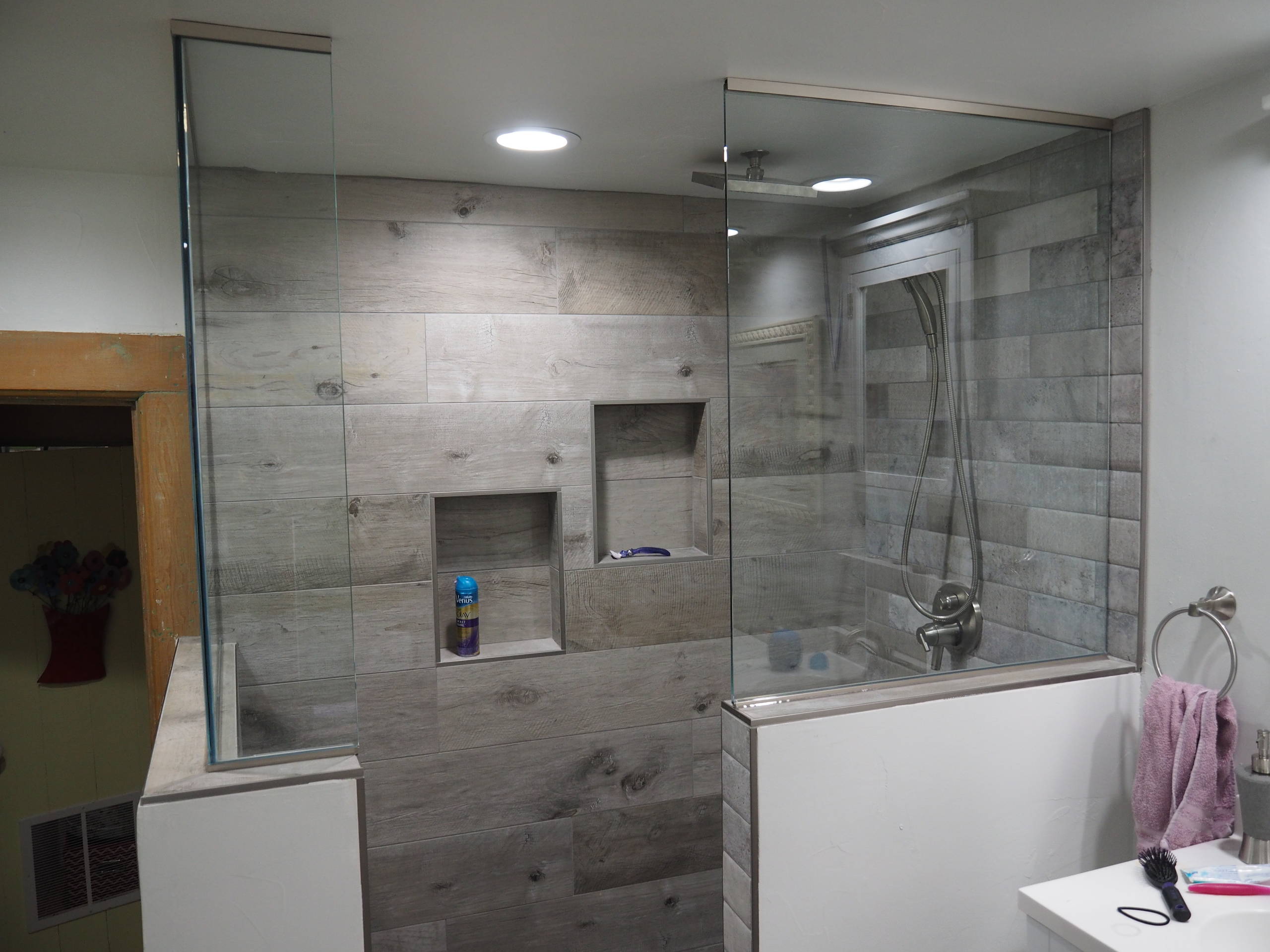Choosing the Right Laminate Flooring for Bathrooms

Bathrooms are high-moisture areas, and traditional laminate flooring isn’t designed to withstand the constant exposure to water. However, advancements in flooring technology have created laminate options specifically for bathrooms, offering both style and durability. Understanding the key features of these specialized laminate floors is crucial to making the right choice for your bathroom.
Water-Resistant and Waterproof Laminate Flooring
Water-resistant and waterproof laminate flooring are essential for bathroom applications. Water-resistant laminate flooring offers a degree of protection against moisture, but it’s not completely impervious to water damage. Waterproof laminate flooring, on the other hand, features a complete moisture barrier, making it ideal for areas with high humidity and potential water spills.
Key Features to Look for in Bathroom Laminate Flooring
- Core Construction: The core of laminate flooring is the foundation of its durability and moisture resistance. Look for laminate floors with a core made from materials like high-density fiberboard (HDF) or waterproof core technology, which provides greater protection against moisture penetration.
- Wear Layer: The wear layer is the top layer of laminate flooring that protects it from scratches, stains, and abrasion. For bathrooms, choose laminate floors with a thicker wear layer, ideally rated for high traffic areas. This ensures the flooring can withstand the wear and tear of foot traffic and potential spills.
- Moisture Barrier: A moisture barrier is a critical feature in bathroom laminate flooring. This layer acts as a shield against water penetration, preventing moisture from reaching the core and causing damage. Look for laminate flooring with a sealed core, a protective coating, or a moisture-resistant underlayment to ensure optimal protection.
Installation and Maintenance of Laminate Flooring in Bathrooms: Can You Put Laminate Flooring In A Bathroom

Installing laminate flooring in a bathroom requires careful planning and execution to ensure its longevity and prevent moisture damage. The process involves preparing the subfloor, installing the laminate planks, and sealing the edges to protect the flooring from water. Proper maintenance practices are crucial to keep the flooring looking its best and extend its lifespan.
Installation Considerations
Installing laminate flooring in a bathroom involves unique considerations due to the potential for moisture exposure. The subfloor must be completely dry and level to prevent warping and buckling of the laminate planks. A moisture barrier should be installed under the laminate to prevent water from seeping through the floor.
- Subfloor Preparation: Ensure the subfloor is level and free of any debris or imperfections. If the subfloor is uneven, use a leveling compound to create a smooth surface. If there is moisture present, address the source of the moisture before proceeding with the installation.
- Moisture Barrier: A moisture barrier is essential to protect the laminate flooring from water damage. It should be installed over the subfloor before laying the laminate planks. Common options for moisture barriers include plastic sheeting, vapor retarder, or moisture-resistant underlayment.
- Laminate Installation: The installation process is similar to installing laminate flooring in other areas of the house. However, it is important to use a waterproof adhesive for the seams and to seal the edges of the flooring with silicone caulk.
- Sealing Edges: After installing the laminate planks, seal the edges of the flooring with silicone caulk to prevent water from penetrating the seams. Pay particular attention to the areas around the bathtub, shower, and sink.
Maintenance Tips, Can you put laminate flooring in a bathroom
Proper maintenance practices are crucial to keep laminate flooring in a bathroom looking its best and extending its lifespan. Regularly cleaning the floor with a damp mop and mild detergent will help remove dirt and grime. Avoid using harsh chemicals or abrasive cleaners, as these can damage the laminate surface.
- Regular Cleaning: Sweep or vacuum the floor regularly to remove dirt and debris. Damp mop the floor weekly using a mild detergent and warm water. Avoid using harsh chemicals or abrasive cleaners, as these can damage the laminate surface.
- Spot Cleaning: Immediately clean up spills and messes to prevent staining. For stubborn stains, use a mild cleaner and a soft cloth.
- Avoid Water Standing: Do not allow water to stand on the floor for extended periods. This can lead to warping or buckling of the laminate planks.
- Protect from Scratches: Place mats or rugs in high-traffic areas to protect the laminate flooring from scratches.
Importance of Sealing and Protecting from Moisture
Sealing the edges of laminate flooring in a bathroom is essential to prevent moisture from penetrating the seams and damaging the floor. Silicone caulk is an effective sealant that can be applied to the edges of the flooring, around the bathtub, shower, and sink.
“Sealing the edges of laminate flooring in a bathroom is crucial to prevent moisture damage. A properly sealed floor will last longer and maintain its aesthetic appeal.”
- Silicone Caulk: Silicone caulk is a durable sealant that forms a watertight barrier. Apply a thin bead of caulk along the edges of the laminate planks, paying particular attention to the areas around the bathtub, shower, and sink.
- Regular Inspection: Regularly inspect the caulk for any cracks or gaps. If you notice any damage, reapply caulk to prevent moisture from penetrating the seams.
- Avoid Excess Water: Avoid using excessive water when cleaning the floor. This can lead to moisture buildup and damage the laminate.
